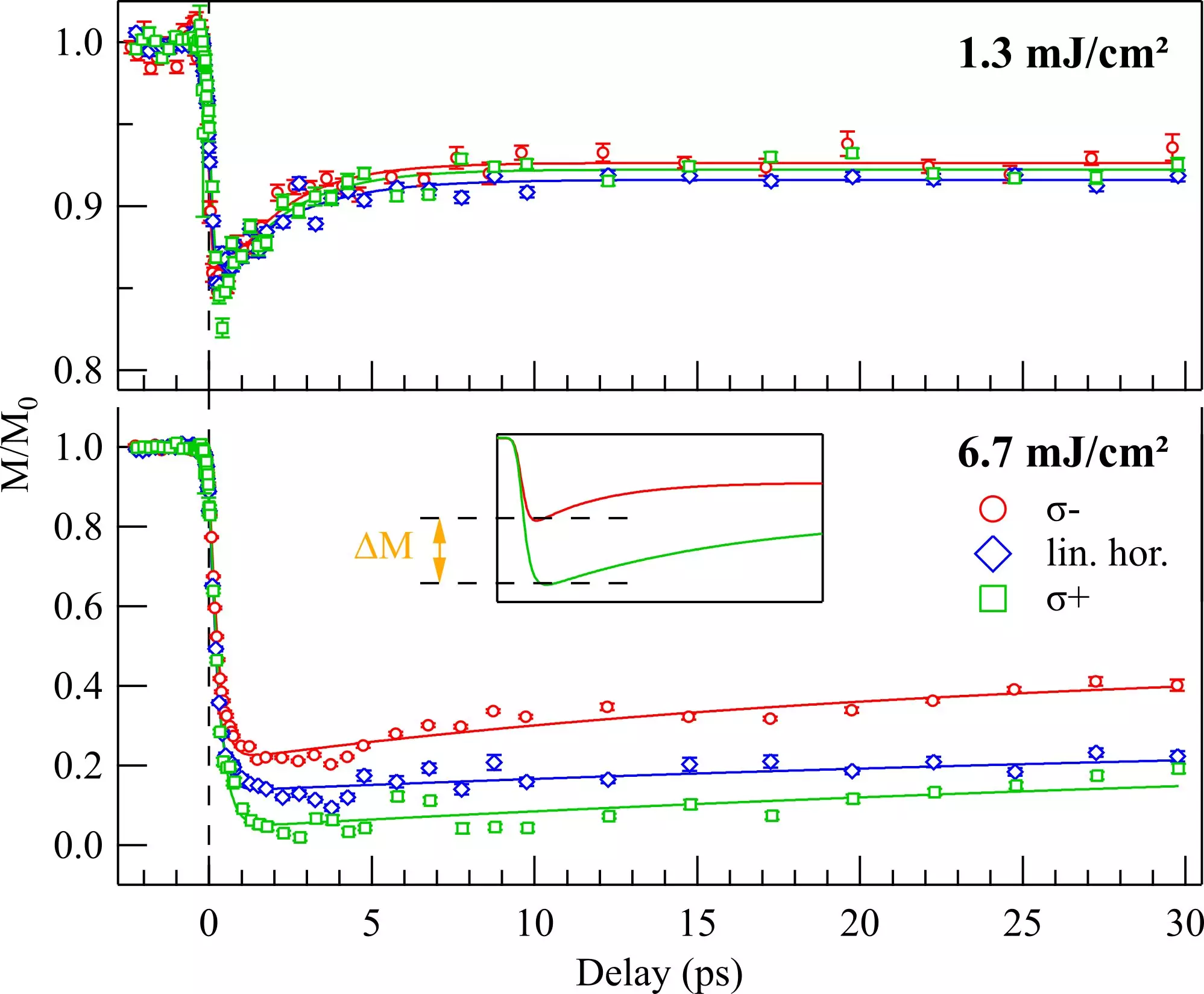In the world of material science, researchers have been continuously exploring innovative methods to manipulate magnetization on ultrafast time scales. One such breakthrough method has recently been discovered by scientists from the Max Born Institute (MBI) and their international collaborators. This revolutionary approach involves the use of circularly polarized pulses of extreme ultraviolet (XUV) radiation to induce large magnetization changes in a ferrimagnetic iron-gadolinium alloy.
Traditionally, intense laser pulses have been employed to switch the magnetization orientation of materials by inducing rapid heating through energy absorption. However, this thermal approach comes with limitations, particularly in applications where fast repetition rates are crucial. The team of researchers led by MBI scientists has explored an alternative non-thermal pathway that relies on the inverse Faraday effect (IFE).
The inverse Faraday effect is a phenomenon that involves a direct and coherent interaction between the polarization of light and the electronic spins in a material. Unlike the traditional heating-induced methods, IFE does not rely on electronic heating but rather on the polarization of the light. By utilizing circularly polarized femtosecond pulses of XUV radiation, the researchers were able to generate a significant opto-magnetic response in the metallic iron-gadolinium alloy.
Through their experiments, the scientists observed that the IFE-induced magnetization could reach up to 20-30% of the ground-state magnetization of the alloy. This remarkable result was achieved by resonantly exciting tightly bound core-level electrons in the material, thanks to the high photon energy of the XUV radiation. The spin-orbit coupling of these core-level electrons played a crucial role in facilitating the generation of large opto-magnetic effects.
The implications of this research are far-reaching, particularly in the realms of ultrafast magnetism, spintronics, and coherent magnetization control. By providing an efficient method for non-thermal generation of large magnetization changes, this novel approach opens up new possibilities for technological advancements in data storage, magnetic sensors, and other related fields. Additionally, the study of nonlinear X-ray matter interactions is expected to benefit significantly from these findings.
The discovery of a non-thermal approach to manipulating magnetism using extreme ultraviolet light represents a significant advancement in the field of material science. By harnessing the power of circularly polarized XUV radiation and the inverse Faraday effect, researchers have unlocked a new pathway for achieving large magnetization changes on ultrafast time scales. The practical applications of this research are vast and hold the potential to revolutionize various industries reliant on magnetization control and manipulation.


Leave a Reply
You must be logged in to post a comment.